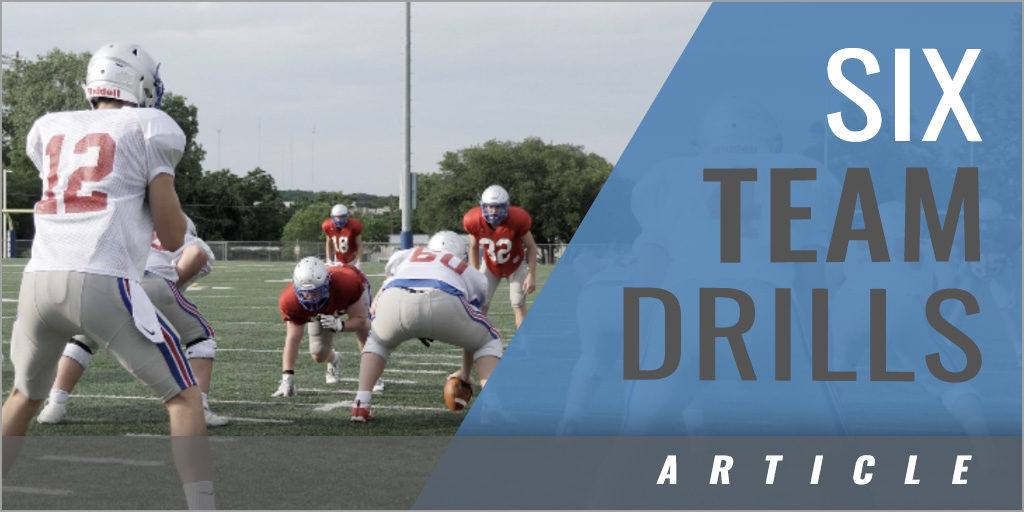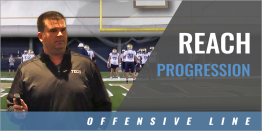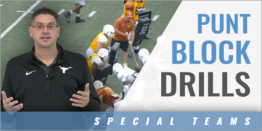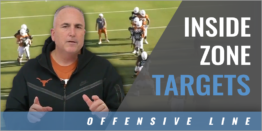|
By: Jeff Neal - Cincinnati Saint Xavier High School (OH) Originally Published in: 2019 Nike Coach of the Year Clinic Manual - by Earl Browning Provided by: Nike Coach of the Year Thank you. It is truly an honor to speak today about Team Drills that I have experienced through the years. Many of them are what we do at Cincinnati St. Xavier High School, and a great one from my early years of coaching. I want to compliment you guys for attending today. If you gain one piece of useful information from this lecture, it's been worth it. I have been blessed to learn from some of the great coaches in the Cincinnati area, especially on the defensive side of the ball. Starting with John Rodenberg at McNicholas High School (mid-1990's) and Moeller High School 2011-17, Steve Sheehan of Oak Hills High School, and the former Cincinnati Academy of Physical Education (CAPE) in the early 2000's. and currently Steve Specht at St. Xavier High School. These legendary coaches have been very influential in my life, and I am very appreciative because I consider myself a constant student of the game. When it comes to drills, you need to have reasoning and situations which present itself throughout a game. It is important that drills are listed by each position coach and introduced throughout the summer months leading up to the season. Checking and dating as you introduce each drill will make sure the drills are ready for game situations. For example. your defensive line coach may be working a cut drill versus the offensive line of an option team. That drill will be introduced in the summer months a few times, but the coach relays to the players that the drill will be used for a certain option opponent. As individual drills work the specific position, whole team drills are essential to work as a unit. Whether it is a two whistle pursuit drill, team turnover drill, or the emphasis on tackling as will be discussed in the first part of my lecture. The team drills can often be derived from scenarios from opponents or scheme that has created problems for you in the past. For example, offensive theories such as option and wing-T can be a nightmare to defend. At St. Xavier High School, we start working against the triple option of Colerain High School in July. We split the defense into a tight end side (or 3-man line side) and split side (2-man side) to create a half-line team drill. In Ohio we get ten days to use for coaching before August 1 and we usually begin summer practice mid-July. What I love about half-line is the teaching aspect of it since you have just a few of your players per position. Lots of teaching can be done this way. and getting it filmed daily is a huge bonus. We are spoiled at St. X with incredible student coaches who take care of equipment, video and anything else you can imagine. So my point is. if you breakdown your defense in half to work option. wing-T, screen game, inside run, lots of coaching can get done quickly on the field and reinforced in the film room. As the game becomes safer, USA Football has become vital in the teaching of safe tackling and blocking. Coach Specht is on the board at USA Football and we use the same drills that are presented for all coaches throughout to emphasize proper technique. "Near foot. near shoulder" is probably used by our staff 50 times a practice whether it is in specific drills or other parts of practice. The three tackle circuits you will see on the upcoming slides are the ones we used this past season beginning in July. I strongly encourage you to film tackling circuits from Day One of practice and progress to show players proper technique. Periodically filming the circuit will also show improvement from Day One. Each of the three stations has two coaches at them so more sets of eyes can be coaching and correcting. The periods last about 4 minutes in length with a one-minute break as they hustle station to station, in a total of 15 minutes. One thing I do at the end of each season is to tally up the number of each missed tackles per game and the reason why the tackles were missed. Steve Sheehan taught me this aspect when I was with him at Oak Hills. It is a very long process but made a bit easier with HUDL these days. Not that stats are everything, but sometimes they make you think about what you need to work on. For example, this past regular season we had a total of 70 missed tackles. The average of missed tackles for a victory was 4.8 and a loss was 8.4. I break the reasons down to the following:
Anytime you get into double-digit missed tackles, usually things don't go well when it comes to victory.
TACKLE CIRCUITS One thing I have not used until this past year is the Physio Ball, or aerobic ball. What I like about it is that it forces the players to use the rip technique. If they come in and try to wrap or hug the ball. it will usually bounce off them. As a coach you can see the rip off the high hands working for `high cloth'. If a player is hugging or wrapping the ball or carrier, the natural movement is for the head to go down. Ripping and high cloth bring the 'eyes to the sky' so they can 'see the hit'. TACKLE # 1
TACKLE # 2
TACKLE #3
Along with three tackling circuits, we also use the afternoon practice to incorporate a turnover circuit. As a coach if you are going to preach turnovers, then you must practice them and not just assume they will occur. Teaching proper punch and strip drills. ball drills, scoop and score. etc are essential for a great defense. We had 23 turnovers on the defensive side in 2018, an area we must improve to get closer to 3 per game. TURNOVER CIRCUIT TURNOVERS #1
TURNOVERS #2
TEMPO The practice week at St. Xavier High School starts with a grind on Monday. After a chapel service in the locker room at 3:25, we hit the field until about 5:50. Monday is not a walk-thru day. We will have a brief 10 minutes on the field scouting report to show top formations and run/ pass concepts. Players receive their electronic scouting report the night before and are expected to have read it by Monday's practice. Tuesday the players walk off the field about 5:35. And that brings us to Wednesday, which is very brief with practice ending at 5:10. The high point on Wednesday is what we call Tempo. The tempo is simply the number 1 offense vs. the number 1 defense starting with the ball on the 20-yard line coming out. Obviously a very fast pace by the offense, it forces the kids to communicate quickly as in a game. Coaches are on the sideline, as they will be Friday night. The great thing about Tempo is that both the offense and defense are running very base oriented plays. As vanilla the play calling can be so the kids can play fast. A quick whistle is used to protect the players we expect to perform at a high level in two days. The ball moves downfield as in a game, or there is a stoppage from the defense. Kids look forward to Tempo as we run it immediately after team stretch. It is filmed and the 'juice' is flowing on both ends. The reality is if you cannot call an offense or defense with your basic concepts, it is going to be a long Friday night. Creativity on both ends will only get you so far in a game until the opposition adjusts. Defensively we may send a four-man pressure out of our 3-3-5 front and play our basic pattern match coverage. You have to be able to hang your hat on something schematically, and the players should know what the base concept is all about. The great economist Adam Smith said `competition creates a healthy society'. The intensity of Tempo is second to none. ST. XAVIER TEMPO
WHERE AM I? The final team drill is "Where am I?" In the spring of 2000. I left McNicholas High School to coach under three-time state champion Steve Sheehan. Coach Sheehan had great success at the Cincinnati Academy of Physical Education (aka CAPE) and had just taken Oak Hills to their only playoff appearance in 1999. To this day, they have not been back to the playoffs. A man that is completely black and white (no grey area), coach Sheehan would do this drill every year typically near the end of July camp. There are many different criteria you can use, I have detailed 19 of them. All players start on the goal line shoulder to shoulder and must honestly respond to the scenarios in regards to academics. weightlifting sessions, playing other sports, discipline issues, etc. the drill progresses, you begin to see gaps created among the players and leaders eventually prevail out towards the front. It was always interesting to see the leaders of the team as we headed towards August practice and eventual captains being named. The looks on the faces as their buddies would be steps ahead of them would always be a nice wake-up call to those that did not commit themselves to football. Once again, you can tweak the criteria based on your program, but you generally want to hit the winter and spring seasons, finishing up with the summer months. Do the drill on the first day of 2-a-day practices and all must be silent and respond truthfully to the commands. Everyone starts on the goal line. This drill came from Steve Sheehan - CAPE/ OAK HILLS High School.
In closing, I would like to thank the Nike Football Clinic here in Las Vegas. I flew out of Cincinnati this morning at 6 am and flying back tonight at midnight. As a history teacher, the definite highlight of the trip was flying over the Grand Canyon as the sun was rising. Simply breathtaking for a geography nerd like myself. It has been an honor to meet coaches from all over the place: Guam, America Samoa, Alaska, Canada and the United States southwest. In 1996 I attended my first Nike clinic in the great city of Louisville, Kentucky. A great clinic still to this day led by Coach Earl Browning. Clinics are a great way for staffs to learn and bond away from the school. Thank you for your time, and hopefully you gained at least one thing you can take back to your program. My email is: If you want a copy of the clinic notes and film clips, let me know. Thanks again and Go Bombers!!! |






